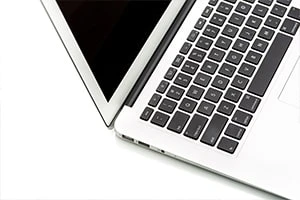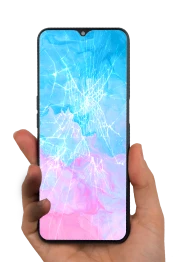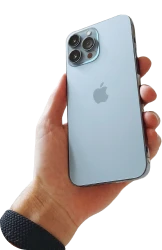MacBook Pro Logic Board Replacement

So much of our lives are tied to our electronics these days. With a device like the MacBook Pro, there’s no doubt that you rely on it. If your logic board isn’t working, it will stop you (and whatever you use your MacBook for) in your tracks. Read on to learn how to perform a MacBook Pro logic board replacement.
Do You Need a MacBook Pro Logic Board Replacement?
The logic board is Apple’s term for the motherboard. Replacing a logic board is usually a final effort since it essentially is the computer. Depending on what model you have, it can house everything from the CPU, graphics chip, RAM, and SSD. Because of its vitality, it’s often the most expensive part of the computer.
Since it controls so many different aspects of the computer, the signs that it’s going bad can overlap with other issues. Most often, logic board problems result in your MacBook Pro booting to a grey screen. Still, the following can also indicate a logic board issue:
Power Problems
If your MacBook Pro isn’t turning on at all, it could be either a battery issue or a fault on the logic board. If it fails to boot up even when your lower cord is plugged in, it points to a logic board issue.
Display Issues
Issues with the graphics chip portion of your logic board can show up in a variety of ways. Your display may not boot up at all, behave inconsistently, scramble images, or only show a faint image. Try plugging in your MacBook Pro to an external display to determine if it’s an issue with your screen or the motherboard itself.
Other Unusual Behaviors
You may also notice that your MacBook Pro isn’t recognizing devices that you’ve plugged in or run into problems accessing WiFi, your integrated webcam, and other peripherals. You may have realized that your fan has stopped turning on, leaving your computer to overheat. Another sign can lie in strange noises or frequent error messages. Both of which can signal another hardware issue or a logic board problem.
What Causes a MacBook Pro Logic Board to Fail?
Several things can cause your MacBook Pro’s logic board to break. Manufacturing faults, liquid damage, and weakened solder can all create logic board problems. The more graphics power that your laptop has, the more heat it generates. Whether you have a MacBook Pro Retina or a MacBook Pro 15, the constricted space within the device and souped-up graphics can lead to part degeneration over time.
Can You Repair a Logic Board Instead of Replacing It?
Sometimes! Often, specific chips and components are at fault and can be replaced without damaging the other chips on the logic board. Apple will typically take a no-risk approach and replace the entire board. It requires electronic knowledge, experience, and micro-soldering skills to repair individual components, so we don’t recommend trying to handle your logic board repair at home.
What is the Cost to Replace a MacBook Pro Logic Board?
To avoid turning your MacBook Pro into a costly paperweight, we recommend going through a qualified service provider for your logic board replacement. The turnaround time on this type of repair can vary, so be sure to discuss what to expect with your technician when you drop it off.
Official Apple Store Cost
If your MacBook Pro is relatively new, then your logic board repair service may still be covered by Apple. A new MacBook Pro comes with 90 days of technical support and a one-year limited warranty on hardware repairs. Plus, if you opted for AppleCare+ on your Mac, your coverage is extended for two additional years. If your MacBook Pro is still covered, you can expect to pay $299 plus tax for your repair. However, logic board replacements on MacBooks that are no longer under warranty can carry a substantial fee. Since so many essential components are housed in this part of your computer, the cost can be anywhere from $500-1,100.
DIY Cost
If you decide to complete the repair yourself, you can purchase all of the tools and parts you’ll need online. Depending on the model of your MacBook Pro, you can expect the replacement logic board to cost anywhere from $150-500. In addition, you’ll need thermal compound and specialty screwdrivers on hand.
CPR Cell Phone Repair
At CPR Cell Phone Repair, we always use professional tools and high-quality parts for MacBook repairs. The total repair costs for your MacBook logic board can vary depending on the model, extensiveness of the damage, and whether the motherboard can be repaired or must be replaced. We offer free estimate requests so that you don’t find yourself stuck with a surprising bill. Plus, all of our repairs are completed by certified technicians and backed by our limited lifetime warranty.
How to Replace Your MacBook Pro Logic Board: DIY Guide
MacBook Pro logic board replacements are a complicated process and should only be attempted by those with experience with computer repair. These step-by-step instructions will walk you through how to replace the logic board on a MacBook Pro.
Before you get started, ensure you have the following tools and parts:
- Cleaner to dissolve thermal paste
- Thermal surface purifier
- Thermal paste
- Small Phillips screwdriver
- Torx screwdriver, depending on model
- Spudger
You will also need a new logic board for your laptop. You’ll need the complete model name of your MacBook, including the year and size, to determine the correct logic board model.
Once you have your supplies gathered, be sure that you have at least a couple of hours to complete your repair.
- Power off your MacBook Pro and flip it over. Unscrew the 10 small screws that secure your lower case to the rest of your laptop.
- Carefully slide your fingers back hinge of your laptop and the lower case. Lift upward gently. This should release the clips that hold your lower case onto the upper case.
- Remove the lower case and carefully set it aside.
- To avoid accidentally short-circuiting your device, disconnect the battery. Depending on your model, this can vary.
You may see a plastic tab attached to the battery connecter. If it’s visible, then gently pull the tab towards the front of your laptop, so that it is parallel to the logic board.
Late 2011 models have a plug that goes down into the logic board. In this case, pull the plug directly up.
If your plastic tab is not visible, use your spudger to pull the battery connecter up. - Carefully remove your right fan connector using the flat portion of your spudger. Gently twisting the spudger can help to gently release the cable wires. Take care not to damage the fan socket.
- Next, unscrew the three small Phillips screws that hold your right fan onto the logic board. Late 2011 MacBook Pro’s use Torx screws here instead of Phillips.
- Remove your right fan from the case. Stay mindful of the fan’s cable.
- Repeat the process on the left fan. Use the spudger to lift the fan connecter from its socket, unscrew the three screws, and remove it from the case.
- Carefully flip the retaining flap of your keyboard backlight ribbon cable using your spudger. Ensure that you’ve flipped the retaining flap, and not pried on the socket. Remove the keyboard backlight ribbon cable from your upper case.
- Next, prepare to remove the camera cable. Use your spudger to move the small plastic retainer that holds it in place away from the camera cable socket.
- Gently pull the camera cable parallel to the face of the logic board, towards the optical drive opening. The socket for the camera cable is incredibly fragile, so take care not to pull it upward.
- Lift the optical drive connecter out of its socket using the flat end of your spudger.
- Use the flat end of your spudger to pry the right speaker connecter and subwoofer out of its socket, pulling from beneath its wires.
- Use the tip of your spudger to flip the retaining flap on your MacBook Pro’s IR sensor ribbon cable socket. Gently pull the ribbon cable out, taking care not to pry on the socket itself.
- Remove the screws from both connector shields on your device’s logic board. Depending on your model, these may be Phillips screws or Torx screws. There will be a total of four screws to remove, two on each connector shield.
- Lift the trackpad connector up from its socket using the flat end of your spudger.
- Locate the keyboard ribbon cable socket. Carefully lift the retaining flap with the tip of your spudger. Gently pull it out of its socket.
- Next, find the express card cage ribbon cable socket. Flip the retaining flap upwards. Gently pull the cable out.
- Gently remove the hard drive cable connector from its socket using the flat end of your spudger.
- With the tip of your spudger, lift the retaining flap on the battery indicator cable socket. Carefully pull out the cable from its socket.
- Locate the display data cable retainer. Pry up the black plastic flap and twist it towards the DC-In side of your laptop. Gently remove the display data cable by pulling it out parallel to the logic board.
- Remove the eight screws that secure the DC-In board and logic board to the MacBook’s upper case. Depending on your model, these screws may be exclusively Phillips style or a combination of Phillips and Torx screws.
- Carefully hold the edges of the logic board and DC-In board. The two will stay connected as you gently lift them away from your upper case. Move it to the side nearest your laptop’s optical drive.
- Gently pull the ports and DC-In board off of the upper case. Be cautious of any cables that may get stuck.
- Unscrew the eight Phillips screws that hold the heat sink onto the logic board. Carefully place the screws and the springs that are attached under them to the side.
- Wedge the heat sink thermal sensor cable between the tip of your spudger and your thumb. Carefully remove the thermal sensor connector from the logic board.
- Remove the heat sink board. You may need to use the flat end of your spudger to separate the components.
- Remove the DC-In board connector from its socket, moving the cables parallel to the logic board.
- Next, prepare to remove the left speaker assembly. Unscrew the two screws that adhere the left speaker to the logic board. Lift the speaker and microphone connectors out of their sockets, using the flat end of your spudger.
- Finally, remove the RAM chip. Simultaneously push each tab on the side of the RAM chip. Once released, the chip will pop up and can be pulled straight out of its socket.
- You’re left with only the logic board. To reassemble your MacBook Pro, grab your replacement logic board and follow these steps in reverse.
Logic board replacements on Apple products are complex. For expert repair services for your MacBook Pro, turn to the professionals at CPR. If you’d like to learn more about our MacBook Pro logic board replacements, contact a CPR Cell Phone Repair store near you!

